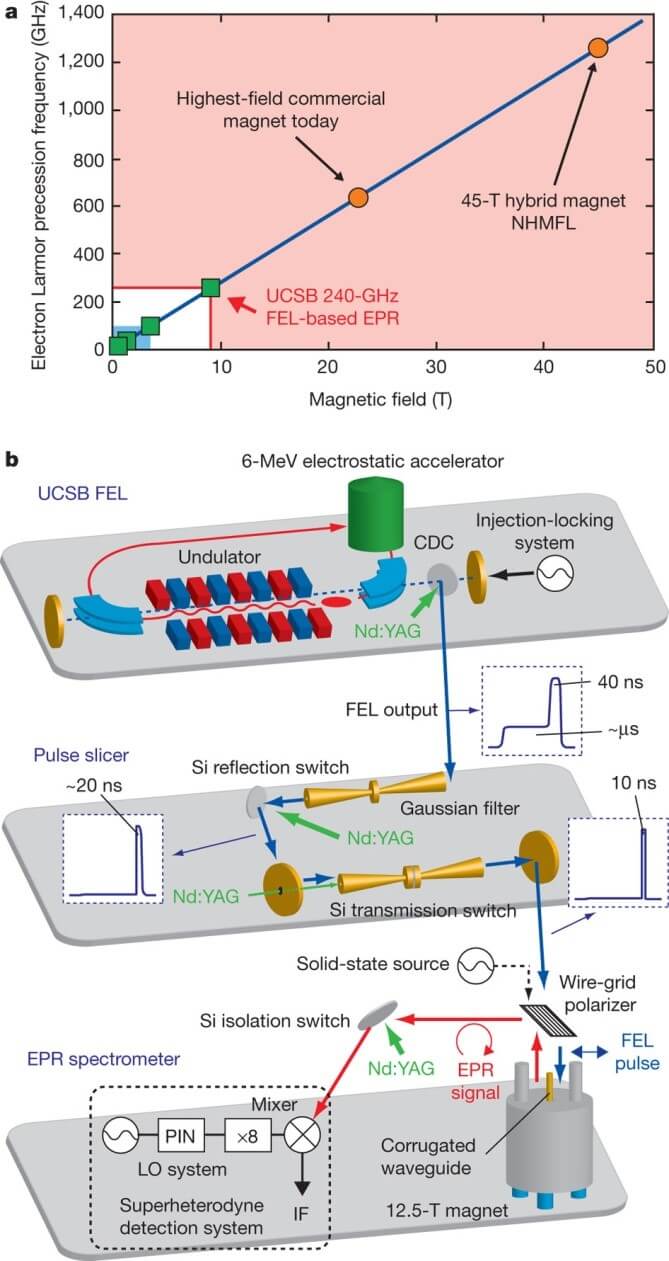Mempro™ Electron Paramagnetic Resonance (EPR) Technology
Creative Biostructure has developed an advanced Mempro™ Nanodisc analysis platform for a long time. With our experienced scientists hammered at Nanodisc resrarch for years, we provide customized Mempro™ electron paramagnetic resonance (EPR) sevice for Nanodisc analysis.
When the solid molecules reveal paramagnetism for their unpaired electron spins, transitions can be activated via using the magnetic field. Then electromagnetic energy is offered during this process, commonly in the range of microwave frequencies. The resulting absorption spectra are named as EPR or electron spin resonance (ESR). EPR has been applied as a powerful technique for the research of radicals formed in solid materials, because the radicals usually generated an unpaired spin on the molecule. The interaction of an electron spin and an exterior magnetic field lies on the magnetic moment connected with the spin, and the nature of an isolated electron spin is such that two and only two orientations are available.
 Figure 1. Towards high-frequency, high-power pulsed EPR spectroscopy. (Takahashi, S. 2012)
Figure 1. Towards high-frequency, high-power pulsed EPR spectroscopy. (Takahashi, S. 2012)
- Nanodiscs Analysis Using EPR Spectroscopy
One of the potent approaches for in-depth research of the physical structure of lipid bilayer and variations caused in it through modifying factors is the utilization of spin probes in EPR Spectroscopy. EPR spectroscopy technique using diverse PC-based spin probes was applied to display cholesterol-like organizing effect of MSPs on lipid bilayer, therefore allowing a better perception into the nanodiscs model membrane structure, as well as its potential implications in the study of membrane protein applications. Derivatives of phosphatidylcholine with paramagnetic centers bound to various carbon atoms in hydrocarbon chain make investigating of lipid bilayer at diverse depths, besides, can offer insight into polarity, structure and motion of labelled molecules. EPR Spectroscopy has been anteriorly successfully used to study a great number of factors that modify fluidity of the membrane, such as cholesterol, carotenoids, peptides and membrane proteins. - Applications of EPR Spectroscopy
EPR spectroscopy is applied in a variety of scientific fields, for example, chemistry, physics and biology, for determination and authentication of free radicals and paramagnetic centers. It is a sensitive approach for testing both radicals formed in chemical reactions and the reactions themselves. Inorganic and organic radicals are able to be determined in electrochemical systems and in materials exposed to UV light. In several cases, the reactions to produce the radicals and the following reactions of the radicals are of interest, however, in other cases EPR is utilized to supply information on radical's geometry and the orbital of the unpaired electron.
Creative Biostructure provides other various Mempro™ nanodisc technology services, besides nanodiscs analysis. Please feel free to contact us for a detailed quote.
References:
Takahashi, S. (2012). “Pulsed electron paramagnetic resonance spectroscopy powered by a free-electron laser”. Nature, 489(7416), 409-413.
Stepien, P.(2015). “Comparative EPR studies on lipid bilayer properties in nanodiscs and liposomes”. Biochimica et Biophysica Acta (BBA)-Biomembranes, 1848(1), 60-66.
Bayburt, T. H. (2010). “Membrane protein assembly into Nanodiscs”. FEBS letters, 584(9), 1721-1727.